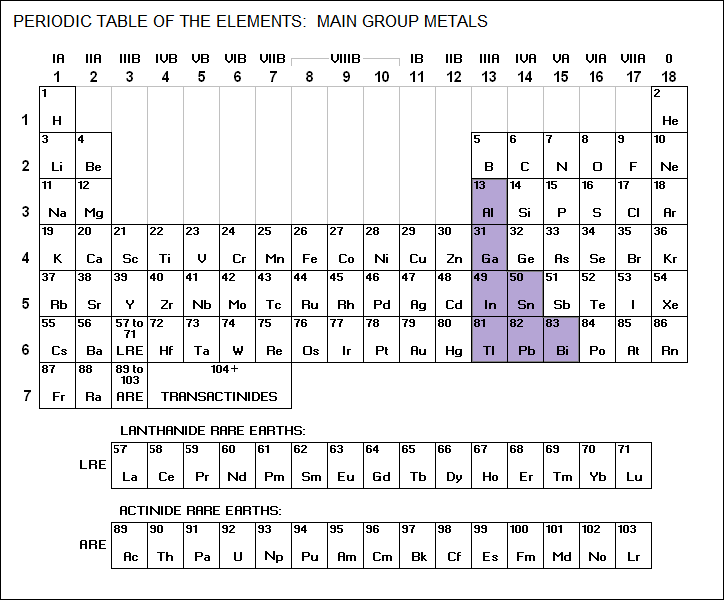
* Lead is a member of the main group metals family:

____________________________________________________________________
LEAD / Pb / 82
A soft, dull silver-gray, ductile, dense metal that has a moderate
inclination towards corrosion. The symbol Pb is from the Latin
"plumbum", meaning a lead weight. Four isotopes are found in
nature:
Pb<208/82> / 52.5%
Pb<206/82> / 24%
Pb<207/82> / 22%
Pb<204/82> / 1.5%
All are stable.
atomic weight: 207.2
abundance: 36th
density: 11.35 gm/cc
melting point: 328 C
boiling point: 1,740 C
valence: <2> 4
____________________________________________________________________
The "Pb++" ion was once referred to as "plumbous" while the "Pb++++" ion was referred to as "plumbic", but they are now known as "lead(II)" and "lead(IV)" respectively.
Lead is produced from a mineral named galena (PbS), with lead production running to several million tonnes a year. It was once heavily used in pipes, but it is toxic, and lead pipes have generally been replaced by cheaper plastic pipes in any case. It was once even used to seal cans of tinned food, with the lead leaching into the food and poisoning it if the cans were kept on the shelf too long. The use of lead is now generally restricted to other applications. It is heavily used in lead-zinc electric storage batteries, and is also used as radiation shielding; for framing stained-glass windows; for weighting and ballasting; and of course for bullet cores. The metal is heavily recycled, partly because disposal is troublesome -- indeed, work is now being performed to figure out a less toxic material for bullets, primarily to avoid expensive cleanups of firing ranges.
